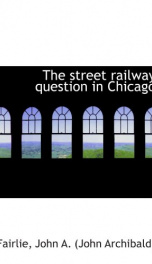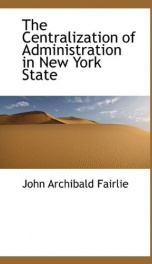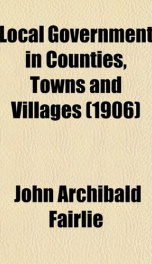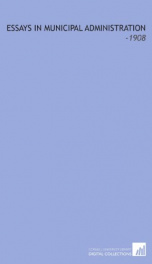the national administration of the united states of america

Purchase of this book includes free trial access to www.million-books.com where you can read more than a million books for free. This is an OCR edition with typos. Excerpt from book: CHAPTER IV The Cabinet And Its Members References.Bryce: The American Commonwealth, I, 86-96, 277-297. Goodnow: Comparative Administrative Law, I, 127-161.Gugoek- Heimer: Development of the Executive Departments, in Jameson: Essays in Constitutional History, 116-185.Burgess: Political Science, II, 263, 311-317.H. J. Ford: American Politics, 383-396. A. L. Lowell: Essays on Government, No. 1.J. I. C. Rare: American Constitutional Law, I, lecture 10.Dupriez: Les Ministres, II, 42-52, 68-95, 150-164.F. Snow: In American Historical Association Reports, 4:309; in Annuls Amer. A cad. 800. and Pol. 8ei., 3:1. Congressional Directory, December, 1904, 257-290.Atlantic Monthly, 50:95.North American Review, 111:330.American Law Review, 23:280-282.Yale Law Journal, 7:1-19.Magazine of American History, 23:386. In the discharge of his administrative functions the President is assisted by a group of advisers known as the Cabinet, which has some resemblances and some points of difference to the cabinets in other governments. As is the general rule elsewhere, the President's Cabinet is composed of the heads of the principal executive departments, into which the national administration is organized. Like the British cabinet, it has | no legal existence as a collective body. But, unlike the cabi- nets in countries having the parliamentary system of government, neither the Cabinet as a whole nor the individual members, in the United States, are politically responsible for the acts of the chief executive. The President has full authority and sole responsibility; and his Cabinet is simply a consultative and advisory body to him, without any effective control over legislation. This situation is indicated by the fact that the members of the President's Cabinet are generally calle...
Info about the book
Author:
Series:
Unknown
ISBN:
1880875217
Rating:
3/5 (3)Your rating:
0/5
Languge:
English
Users who have this book
Users who want this book
What readers are saying
What do you think? Write your own comment on this book!
write a commentGenre
if you like the national administration of the united states of america try:
Do you want to read a book that interests you? It’s EASY!
Create an account and send a request for reading to other users on the Webpage of the book!





